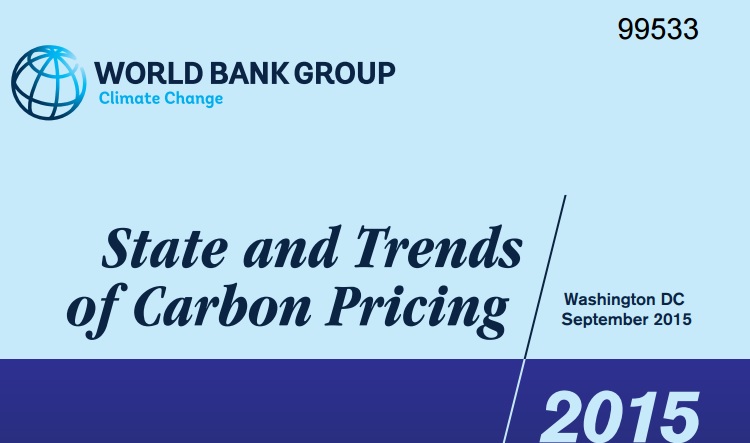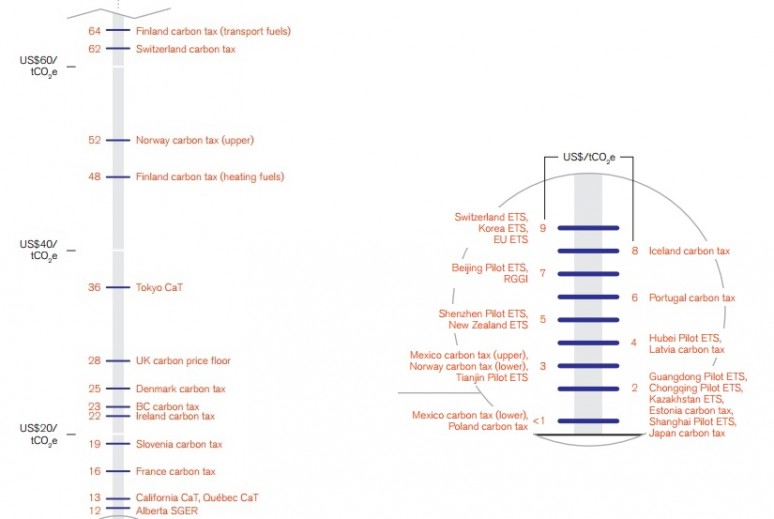New report shows the number of implemented or planned carbon pricing schemes around the world has almost doubled since 2012, with existing schemes now worth about $50 billion.
September, 21st, 2015
About 40 nations and 23 cities, states or regions are using a carbon price. This represents the equivalent of about 7 billion tons of carbon dioxide, or 12 percent of annual global greenhouse gas emissions.
The spotlight is on New York now with the upcoming United Nations meeting on the new Sustainable Development Goals, Climate Week New York, and in about two months, global leaders will meet again in Paris for COP 21.
The decisions made in New York and Paris will set the course for development for years to come. But while these are top level, pivotal meetings, actors around the world are not waiting for a global agreement to act. They are already putting a price on carbon dioxide and other greenhouse gas emissions to drive clean investment. This includes the private sector. And we’ve seen companies from the oil and gas industry – calling for widespread carbon pricing.
The existing carbon prices vary significantly—from less than US$1 per tCO2 e to US$130 per tCO2 e (Sweden carbon tax). The majority of emissions (85 percent) are priced at less than US$10 per tCO2 e, which is considerably lower than the price that economic models have estimated is needed to meet the 2°C climate stabilization goal recommended by scientists
Examples of prices USD/tonCO2e:
Examples of new schemes:
- Last year, Chile approved a national carbon tax to start in 2017.
- In January of this year, the Republic of Korea launched an ambitious carbon market.
- Today, the EU ETS is the largest carbon instrument in terms of value, followed by the trading systems in Korea and California.
- Ontario, Canada’s most populous province, announced in April that it is joining California and Quebec’s emissions trading systems. And the EU and South Korea announced plans this week to explore linkage between their emissions trading systems.
- The US and China – the world’s largest greenhouse gas emitters – host the two largest national carbon pricing initiatives in terms of volume covered, driven by initiatives in their states and provinces. In China, the carbon initiatives cover the equivalent of 1 billion tons of CO2, while in the US, they cover the equivalent of 0.5 billion tons of CO2.
- China, which already has seven pilot carbon markets operating in major cities and provinces, announced plans to launch a national system in 2016. And it was just announced on Wednesday last week that more than two dozen cities in China and the US are making new pledges to lower emissions.

